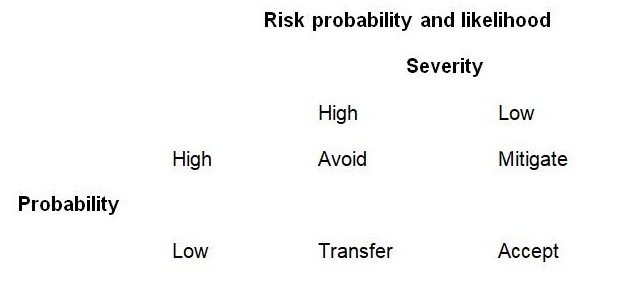In a world relying on information technology to cope with the changing times, IT project risks are not hard to find. Most companies in the world rely on IT not only to deal with the changes that come with time but also to be able to keep up with the industry best practices. Apple Inc. a good example of a major organization that has had its ups and downs in IT, has for a long time tried to be at the top of competitors such as Microsoft and Sony. Hence the reported successes and failures in some of their products.
One of Apple’s big projects was the introduction of the Macintosh Portable. At that point when the project team was involved in designing the model, Microsoft and IBM were the major leaders in the computing industry. With Macintosh Portable, Apple desired to make a computer that would meet the needs of its users in terms of portability, speed and one that was user friendly (Picarille, 1998). Some known-unknown risk associated with the project was the fact that it could fail to meet their expectation if consumers did not like it, but the team could not ascertain to what level this risk could affect the success of Macintosh Portable.
Some of the risks associated with the project include its bulkiness which would ultimately affect the initial objective of the team which was to make it portable. Customers though thrilled with the new product would soon find that it did not meet their portability needs. The high price set for the Macintosh at first was appropriate to earn the company profits intended to offset the high costs involved with the design and production of Macintosh. The time frame within which the Macintosh was made was short. This could have been a strategy to avoid long term expensive projects, but it proved detrimental to the company because of the limited scope of software that it could use. One opportunity that Apple had with the introduction of Macintosh was the fact that people worldwide needed a computer that was user friendly. This opportunity, however, posed risks because the project team were not involved in the careful planning of the project. Lack of appropriate planning was a characteristic of Apple as is evidenced by the numerous failed projects that came before and after the Macintosh Portable.
All these risks have one thing in common; they were all internal to the company. The project team’s planning plays an important role in the success or failure of the project (Marchewka, 2006). Apple did not have a clearly defined time, budget and scope of the project. The project was made in hurry; it could have been to cut down the expenses or to take advantage of the market. Eventually, the above risks led to the failure of Macintosh because customers could not find the product portable, user friendly, and also because of its high price and limited range of software.
In response to these risks, Apple decided to avoid the risk of ultimate company failure by taking steps to produce new and improved models such as the PowerBook intended to be less bulky than the Macintosh. It also produced the System 7 intended to provide a more user-friendly interface as well as improved networking capabilities.

Using the risk probability and likelihood matrix as above (Royer, 2001), the only appropriate response of Apple inc. was to avoid the risk altogether because if it continued with the project, the probability of the project failing was high and the impact was also high because it would ultimately lead to losses.
Other risks that were inherent to Apple from the beginning were the failure to gain market share and market attractiveness. This is evidenced by its inability to keep products through the introduction and cessation of products in the market. Also competition within its products, that is, the introduction of the Lisa and Macintosh at almost the same time provided a way leeway for consumers to be indifferent on what to buy.
The risk of lack of market attractiveness and market share is a severe one, and it needs to be avoided at all costs. This is because a company can have a large market and stay in the market that will lead to its success (Schwalbe, 2005). Also, for a company like Apple which has major competitors like Microsoft and Sony, it must strive to work towards meeting customer needs to survive in the long run.
References
Marchewka, J. (2006). Information Technology – Project Management. New York: John Wiley & Sons
Picarille, L. (1998). “Booming iMac Sales Dispel Clouds over Apple.” CRN no. 810:225.
Royer, P S. (2001). Project Risk Management: A Proactive Approach. New York. John Wiley & Sons.
Schwalbe, K. (2005). Information Technology Project Management (4th ed). Course Technology.